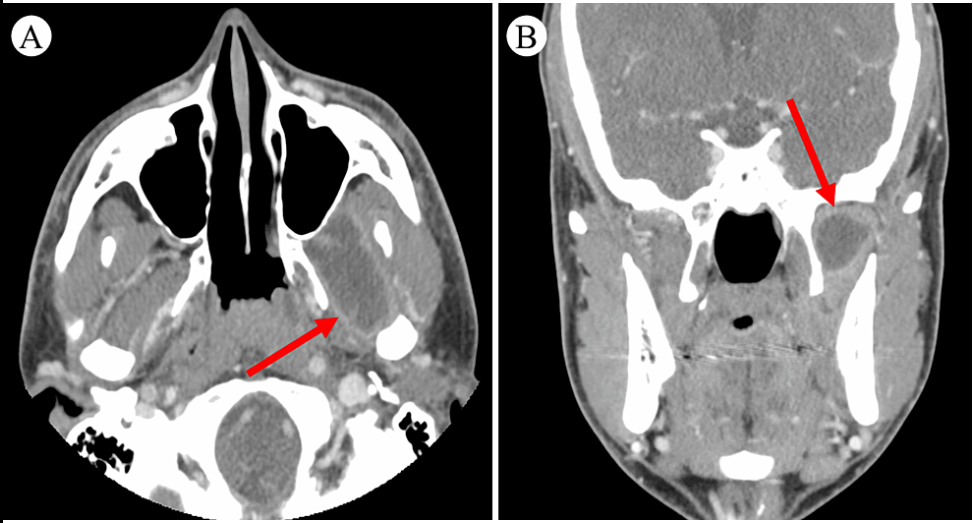An interesting article titled “A Rare Infratemporal Fossa Abscess of the Lateral Pterygoid” appears in Cureus written by B.S. Daines, R. Varman, and J. Cordero (May 27, 2022, vol. 14, no. 5, pp. e25391). The article discusses how a 26 year old man developed an infratemporal fossa abscess in the lateral pterygoid, a masticatory muscle used for chewing, after having a wisdom tooth extraction.
The article discusses how the 26 year old man developed facial swelling after having two upper wisdom teeth extracted. He presented with facial swelling on his left side which was accompanied by constant and dull pain localized to the left face with radiation to the left temple and made worse when he opened his jaw. The man also had a low grade fever and his symptoms persisted even with taking oral amoxicillin for one week and then oral clindamycin the subsequent week. A physical exam revealed that the man had significant swelling that was warm and tender to touch. There was nothing unusual found at the wisdom tooth extraction site and the man’s cranial nerves had normal sensation.
Laboratory results showed that the man had an elevated white blood cell (WBC) count of 17.3 K/µL. A maxillofacial computed tomography (CT) scan showed a 2.9 cm × 3.6 cm × 2.2 cm rim-enhancing fluid collection of the man’s lateral pterygoid which indicated an infratemporal fossa abscess. Due to the abscess’s proximity to the buccal mucosa and to provide pain relief the abscess was drained and a sample sent for lab testing. The man was admitted to a hospital for observation and given intravenous antibiotics (piperacillin-tazobactam).

The man experienced new-onset chills over the next day and continued to have a fever, swelling, difficulty opening the mouth, and pain. The man’s white blood cell count increased and an incision of the buccal mucosa overlying the abscess was made along with additional drainage. Cultures of the abscess showed Streptococcus anginosus with resistance to clindamycin. Over the next few days the man’s symptoms improved and he was discharged and given antibiotics (amoxicillin-clavulanate) to take for two weeks.
The infratemporal fossa is a complex potential space harboring many critical structures. One of the major mastication muscles contained is the the lateral pterygoid which appears two-headed and fan-shaped. Infection of the infratemporal fossa with an abscess is rare. When an abscess causes inflammation to the lateral pterygoid, it can cause pain, chewing problems, and swelling. Thus the symptoms of an abscess can mimic temporomandibular joint dysfunction and must be diagnosed early to preven it from spreading. The authors state:
“Lateral pterygoid abscesses can present similarly to TMJ dysfunction and must be differentiated early to prevent abscess expansion into nearby structures.”
Further, the nearby structures which include the mandibular nerve or chorda tympani, can produce tingling sensations and sharp shocking pain. A spreading abscess can also lead to life threatening conditions that involve the cavernous sinus or deep cervical fascia. The authors state that surgical drainage of an abscess in the lateral pterygoid is the treatment of choice and can be done after excluding other conditions like tumors through a CT.
